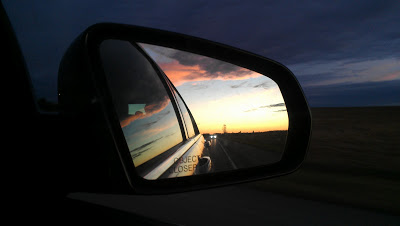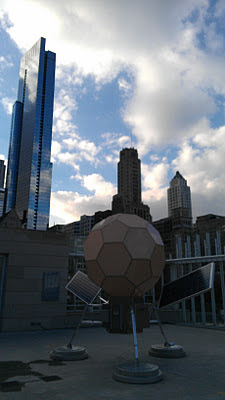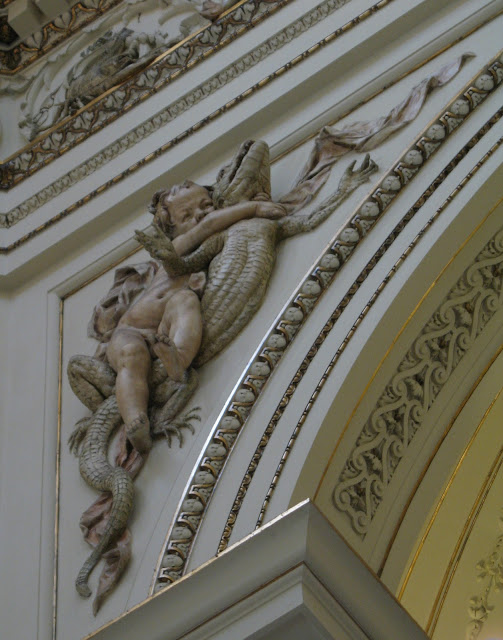
I thought I would take a momentary break from art in order to ruminate a bit about the value of women’s colleges.
A few weeks ago there was a flurry of opinion by news pundits (mostly people who have no personal or professional experience in the subject) about the viability of the very idea of women’s colleges. The issue was spurred on by a recent study indicating that graduates from single-sex institutions are not ultimately more successful than their co-ed counterparts. As I’ve observed it in the media, the argument for women’s schools tends to go back to points about the continued inequality between the genders in the work place, in political office, in pay, and the opportunity that an all-women’s education affords young women to step into leadership roles that might otherwise be denied to them. The argument against consistently boils down to the idea that the world is co-ed and therefore the best way to prepare for it is in a co-ed environment. Both of these arguments are probably at least partially true, as far as they represent the needs and perspectives of different individuals. Certainly some women will fare better in life if they are allowed an all-female college experience, just as others will benefit more from a co-ed environment. However, to say that the only way to prepare for the “real world” is through a co-ed university is to deeply misunderstand the benefit of a single-sex education. More importantly, it actually represents the kind of narrow concept of society and our roles within it that an experience in a women’s college serves to buttress against.
I should perhaps backtrack a moment and describe my own decision to attend Smith College as an undergraduate. Coming out of a co-ed public high school, I initially fought the idea of even looking at the women’s colleges—as my mother pushed me to do—and wanted instead to focus on places like Grinnell, Amherst, and Swarthmore. However, in the midst of creating my list of perspective schools, I happened to see a documentary on Hillary Clinton’s graduating class from Wellesley. I was impressed, not just by the accomplishments of the featured individuals, but by the people themselves. They were women I wanted to know and could see myself growing into. So I reluctantly added Wellesley to my list.
Of course, once I allowed myself to look at one single-sex school, there was no reason not to look at them all. When I did, what I found was a group of colleges that catered to my interests better than the choices on my original list. By the time I actually applied, only my back-up school was co-ed. There were many reasons for me to attend the colleges I applied to—high academic standards, incredible facilities, strong programs in my areas of interest, entrance into an honor’s program, gorgeous campuses, far-reaching alumni networks—but what ultimately won me over was a quality that is far more difficult to quantify or describe.
Because they are in the same area, I visited Amherst and Smith on the same day. What disturbed me most about Amherst, which at the time ranked either first or second in the country, was the sense that it offered a social experience not so different from high school. The young woman who took us on our campus tour was well-dressed and in make-up, professional but self-conscious, as were the other female students we passed. Despite their different races and ethnicities, there was nonetheless a strong sense of sameness about the women there, and in retrospect I now see it as a shared willingness to be what they sensed others expected them to be. What was worse was that I saw myself doing the same, and I became uncomfortably aware of my own interest in the young men in my tour group and on campus. In contrast, when we got to Smith the atmosphere was decidedly more relaxed, even free. Our guide was clean-faced and casual, while the other students we passed could not be easily categorized into any one type. Paradoxically, it was only in the single-sex institutions that I saw women who clearly thought of themselves as people, rather than female, first.
And so I went to Smith. Not all of my initial hopes and perceptions turned out to be true. I was not able to avoid the distractions of personal relationships, but I did learn that friendships can be nearly as intimate and painful as any romantic entanglement. The alumni network, combined with Smith’s reputation, has helped me navigate the competitive waters of my career. Yet they have not served as a bulwark against the current financial crisis which has forced me into a cross-roads I had hoped never to reach. I have often wondered how my life would be different if I had gone to one of the schools from my original list, but I have never regretted choosing Smith. The reason is simply this: even as a natural skeptic, being in a single-sex environment offered me the opportunity to see the world in a way I never could have from the standard co-ed vantage point.
That is the real reason why women’s colleges are and will continue to be necessary in our society. They offer a three-to-four year experiment in living, after which those social and psychological norms often taken as natural in the “real world” reveal themselves to be mere constructions, and often harmful ones at that. The experience is not for everyone; I certainly knew people who did not want to be there, should not have been there, and, in some cases, made the lives of the people around them a little worse because they were there. However, if you come with curiosity about the human condition and are flexible enough to ask questions you may not like the answers to, there simply is no substitute for the difficult, troubling, incredible, and singular experience of a single-sex education. To lose women’s colleges would be to lose questions that we otherwise would not know to ask, and therefore to lose knowledge we could not otherwise gain.
Okay, enough of my ramblings. I will return to art for the next post.
Photo by Renée DeVoe Mertz.

















